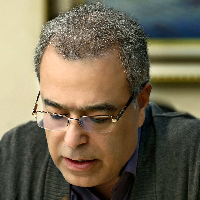Evaluating Environmental Quality around the Holy Shrine of Hazrat-e Masoumeh Using Exposure-based Approach
Author(s):
Abstract:
Rapid growth of the cities and their physical development causes a variety of crises such as environmental problems and the drop in the quality of the environment in the urban life. To this end، the necessity of paying attention to the concept of quality، its promotion in the residential environments and attending the problems is more so felt. In recent years، extensive researches in this domain have been carried out. The relationship between the urban planning policies and the environmental quality has been a source of great controversy for a very long time. At one extreme، there exists the view that greater urban development and activity، inevitably، leads to environmental degradation and، ultimately، to possible ecological collapse and reduced environmental quality in the urban residential areas. As Johnson et al (1997) argue، environmental quality is a set of properties and characteristics of the environment، either generalized or local، as that impinge on human beings and other organisms. In urban planning، filed environmental quality is a general term which can refer to various characteristics of the mankind and the natural phenomena. It is a measure of the condition of an environment relative to the requirements of one or more species and or any human need or purpose. Several recent studies have identified inverted-U relationships between residential satisfaction and the environmental quality. In Iran، due to the increase in city living and high speed of changes in the urban contexts، the quality of environment in urban areas has considerably declined. The urbanization trend in Iran during the last decades has been accelerated by high rate of rural-urban migration along with rapid socio-economic and political changes which has lead to unbalanced urban expansion. During the last 50 years، population of Iran has experienced a three-fold increase (from 19 to 75 million) while the population of the cities has undergone a six-fold growth (from 6 million to 43 million). The number of the cities with over one million in population has risen from 2 to 10 from 1966 to 2006. One of the important issues، when looking at this trend، is increasing urban environmental quality. The purpose of the present study is to evaluate quality of the environment، rank the methods using the Exposure-based Approach for promoting the environmental value in Qom city. The quality of the environment was evaluated by making an experimental model of the quality assessment (value tree) using the top-down method and yardstick investigation in 4 levels of the tree value. Data analysis has been also conducted using HMR. The results of Exploratory Factor Analysis show that Exposure-based Approach of quality assessment was the most suitable model in evaluating quality. Data analysis، (multi vibrant regression، road analysis، Pierson experiment and…)، show with 99 percent certainty that there is a meaningful relationship between the dependent and the independent variables. The analysis results express environmental quality، in view of the users of the Hazrat-e Masoumeh’s Shrine، was lower than the mid-level (1<2. 73<5 with visionary mid 3).
Keywords:
Language:
Persian
Published:
Journal of Architect, Urban Design & Urban Planning, Volume:5 Issue: 9, 2012
Page:
323
magiran.com/p1132415
دانلود و مطالعه متن این مقاله با یکی از روشهای زیر امکان پذیر است:
اشتراک شخصی
با عضویت و پرداخت آنلاین حق اشتراک یکساله به مبلغ 1,390,000ريال میتوانید 70 عنوان مطلب دانلود کنید!
اشتراک سازمانی
به کتابخانه دانشگاه یا محل کار خود پیشنهاد کنید تا اشتراک سازمانی این پایگاه را برای دسترسی نامحدود همه کاربران به متن مطالب تهیه نمایند!
توجه!
- حق عضویت دریافتی صرف حمایت از نشریات عضو و نگهداری، تکمیل و توسعه مگیران میشود.
- پرداخت حق اشتراک و دانلود مقالات اجازه بازنشر آن در سایر رسانههای چاپی و دیجیتال را به کاربر نمیدهد.
In order to view content subscription is required
Personal subscription
Subscribe magiran.com for 70 € euros via PayPal and download 70 articles during a year.
Organization subscription
Please contact us to subscribe your university or library for unlimited access!



